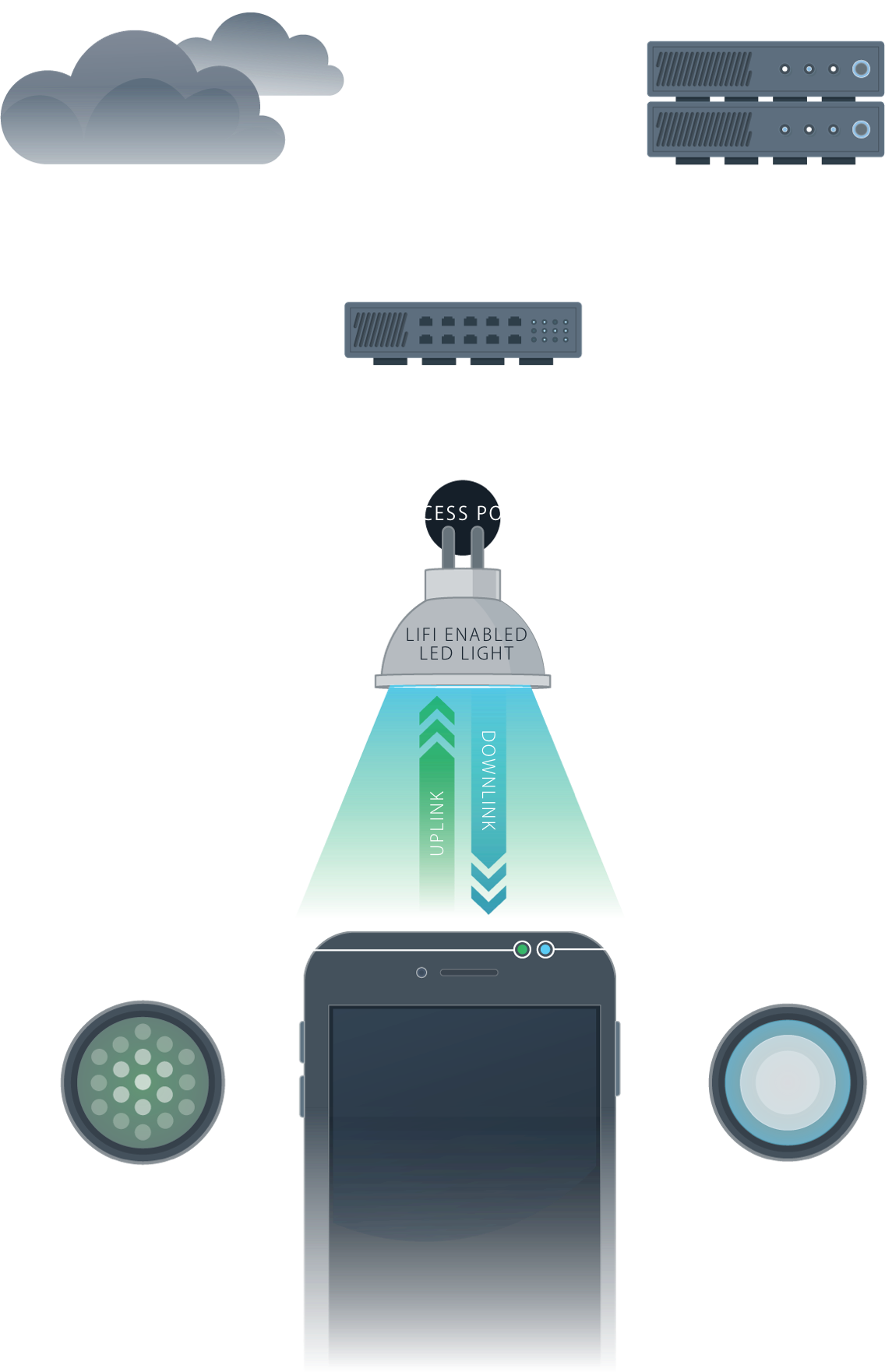How LiFi works..
Where light follows you.
Imagin a world where every lamp is a internet access point. Road lamps provid light as well as highest speed internet access you experienced ever.

Explanation from Harald Haas
How it works
The basic function of Li-Fi is transferring data through a light beam which varies intensively fast that human eye cannot sense the variation of the light beam. As the Wi-Fi uses radio signals Li-Fi uses light signal which provides a bandwidth of 780 THz and the entire radio frequency spectrum offers only 300 GHz of bandwidth. The first tested Li-Fi version transfers data using IEEE 802.15.7 protocol. (Haas, 2018) Because of this higher bandwidth and parallel transmission method Li-Fi can transfer data in a rate of 6 Gbps from the implementation. (Haas, 2015) Li-Fi can transmit data in a very low light that the human eyes cannot catch. (Altraide, 2020).
Benifits of LiFi
In industrial standards using different protocols and private radio frequency spectrum the maximum data rate of Wi-Fi is 1.3Gbps and this protocol called IEEE 802.11ac. (Colbach, 2019) When comparing Wi-Fi and Li-Fi the most important factor is data rate. From the invention of Li-Fi has overcome the maximum data transfer rate of Wi-Fi. This data rate is almost about 20 times higher than Wi-F and this will increase in near future. (Ramadhani and Mahardika, 2018) Wi-Fi consumes a lot of energy though its transmission process to transmit data. To transmit and receive Wi-Fi signals using modems and antennas and to maximize the strength of these radio frequency (RF) signals it absorbs higher amount of energy and drains lot of power from batteries. But energy wise Li-Fi consumes lower amount of energy as LED consumes small amount of energy to emit light.
Lifi Vs Wifi
| Feature | LiFi | WiFi |
|---|---|---|
|
|
|
|
|
|
|
|
|
|
|
|
|
|
|
|
|
|